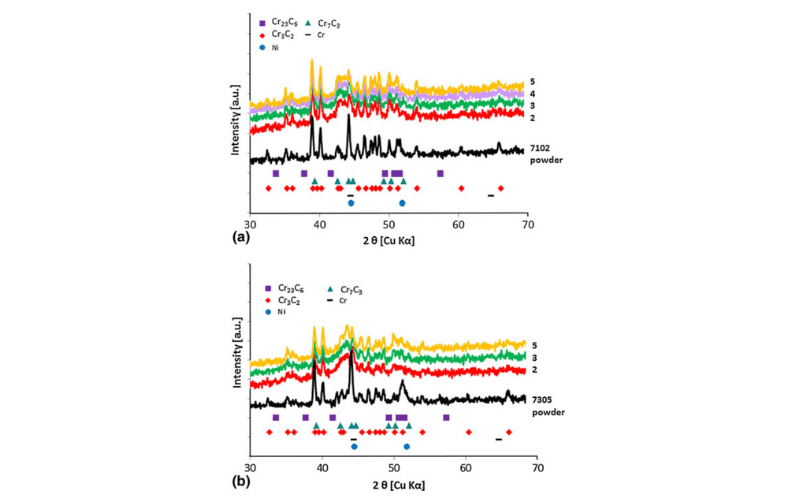November 10, 2012
Engineering HVOF-Sprayed Cr3C2-NiCr Coatings: The Effect of Particle Morphology and Spraying Parameters on the Microstructure, Properties, and High Temperature Wear Performance
Chromium carbide-based thermally sprayed coatings are widely used for high temperature wear applications (typical temperature range from 540 to 900 °C). In these extreme environments at those temperatures, several phenomena will degrade, oxidize, and change the microstructure of the coatings, thereby affecting their wear behavior. Although it can be easily conceived that the Cr3C2-NiCr coating microstructure evolution after high temperature exposure will depend on the as-sprayed microstructure and spraying parameters, very little has been done in this regard. This study intends to develop a better understanding of the effect of spraying parameters on the resulting chromium carbide coating microstructure after high temperature operation and high temperature sliding wear properties. The microstructures of different coatings produced from two morphologies of Cr3C2-NiCr powders and under a window of in-flight particle temperature and velocity values were characterized through x-ray diffraction and scanning electron microscopy. Sliding wear at 800 °C was performed and the wear behavior correlated with the spraying parameters and coating microstructure. Vickers microhardness (300 gf) of the coatings before and after sliding wear was also measured.
Key words: chromium carbide, high temperature wear, HVOF, microstructure, sliding wear testing, spray parameters
Originally published at Journal of Thermal Spray Technology (10 November 2012, Volume 22, pages 280–289, 2013)
By Dominique Poirier, Jean-Gabriel Legoux, Rogerio S. Lima
